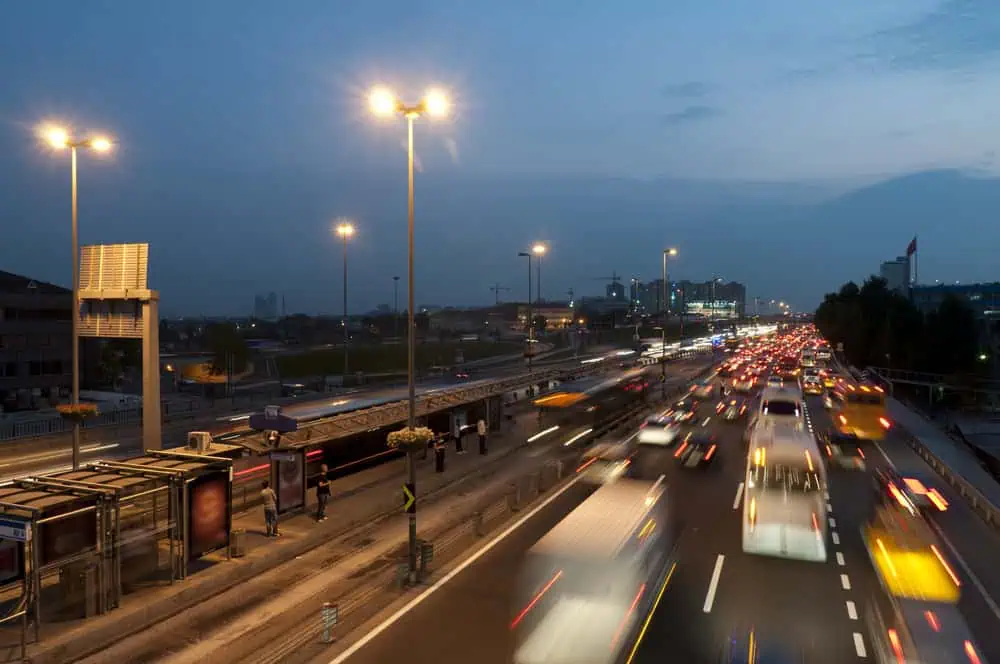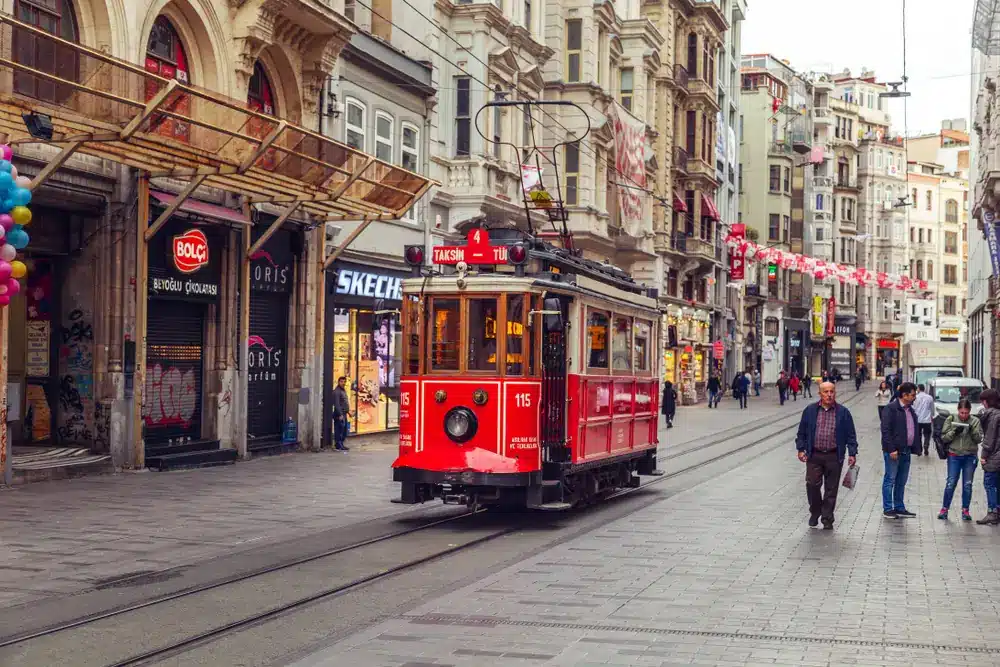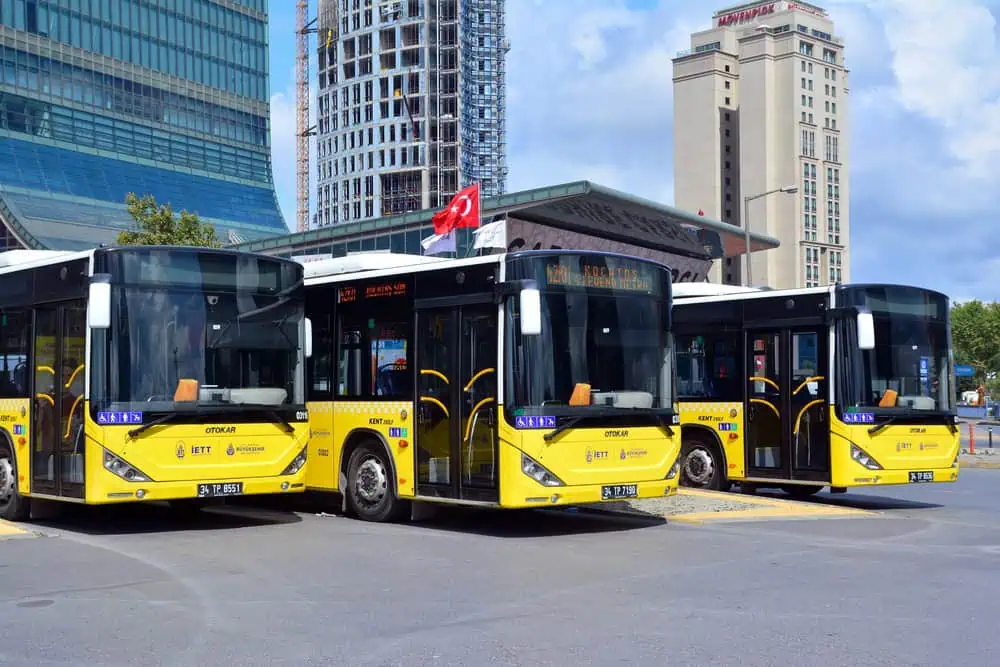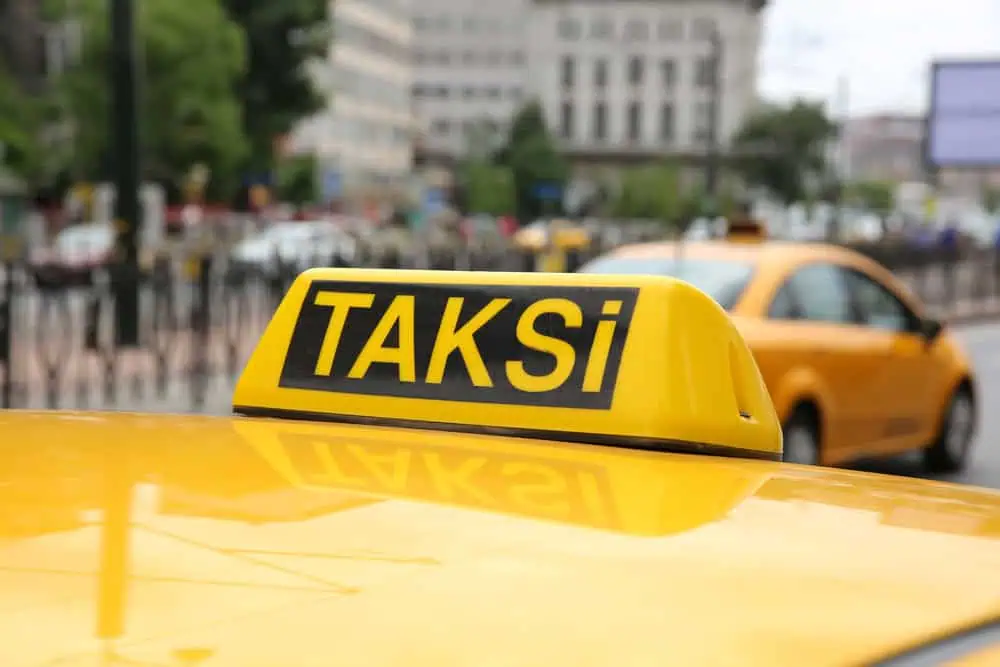Istanbul, a city where East meets West, is uniquely positioned at the crossroads of Europe and Asia. This vibrant metropolis, with its rich history and diverse culture, is divided by the Bosphorus Strait, creating a city that literally spans two continents. As a result, the transportation in Istanbul plays a crucial role in connecting these distinct parts, making the city accessible to its residents and the millions of tourists who visit each year.
The importance of an efficient transportation system in Istanbul cannot be overstated. With a population exceeding 15 million people and a constant influx of visitors, navigating the city’s vast expanse requires a well-integrated network of transportation options. From bustling markets in the historic district of Sultanahmet to the modern business centers in Levent, transportation in Istanbul is the lifeline that keeps the city moving.
For both tourists and residents, understanding the various transportation options in Istanbul is essential. The city’s network includes everything from metro lines and trams to buses and ferries, each offering a unique way to experience the city’s distinct neighborhoods. Whether you’re planning a quick commute across the Bosphorus or a leisurely exploration of Istanbul’s historic sites, knowing how to navigate transportation in Istanbul will enhance your experience and ensure you make the most of your time in this dynamic city.
Overview of Istanbul’s Transportation Network
A. Public Transport
Transportation in Istanbul is anchored by a vast public transport network, essential for the city’s daily mobility. This system includes metros, trams, buses, and ferries, all interconnected to ensure seamless travel across the city.
Central to this network is the Istanbulkart, an all-in-one public transport card that simplifies travel. Whether using the metro, tram, or ferry, the Istanbulkart offers a convenient way to navigate the city. Both tourists and residents find it indispensable for efficient transportation in Istanbul.
B. Private and Alternative Transportation
In addition to public transport, Istanbul offers private and alternative options. Taxis are widely available, and ride-hailing apps like BiTaksi and Uber provide a more comfortable way to get around.
For those who prefer to explore at their own pace, car rentals are an option, though driving in Istanbul’s traffic can be challenging. In certain areas, particularly historic districts, walking and cycling are popular alternatives, offering a more intimate way to experience Istanbul’s cultural heritage.
Metro System: The Backbone of Istanbul’s Transport
A. Overview of the Metro Lines
Transportation in Istanbul relies heavily on its metro system, a crucial component of the city’s public transport network. Starting with the M1 line in 1989, which connected the city center to the airport, the metro has expanded into a comprehensive network across both the European and Asian sides.
Key metro lines include:
- M1 (Yenikapı – Atatürk Airport/Kirazlı): Connects the city center with Atatürk Airport.
- M2 (Yenikapı – Hacıosman): Runs through major business and tourist areas like Taksim.
- M3 (Kirazlı – Olimpiyat/Başakşehir): Serves residential areas on the European side.
- M4 (Kadıköy – Tavşantepe): The first Asian side metro, linking Kadıköy with outer districts.
- M5 (Üsküdar – Çekmeköy): Connects Üsküdar with suburban areas on the Asian side.
- M7 (Mecidiyeköy – Mahmutbey): Istanbul’s first fully automated metro line.
The Marmaray line, opened in 2013, is a standout, connecting Europe and Asia via an underwater tunnel, making it a vital part of transportation in Istanbul.
B. How to Use the Metro
Using the metro in Istanbul is simple, especially with the Istanbulkart, which is accepted on all lines. The system is user-friendly, with clear signage in Turkish and English. Fares are affordable and deducted automatically when you swipe your Istanbulkart at the entrance gates. For tourists, single-use tokens are available, but the Istanbulkart offers better value.
Peak hours are typically from 7:00-9:00 AM and 5:00-7:00 PM. To avoid crowds, plan your travel outside these times. Popular lines like the M2 can be particularly busy, so it’s helpful to familiarize yourself with the metro map.
C. Future Expansions
Istanbul’s metro system continues to expand, with several new lines under construction:
- M8 (Bostancı – Parseller): Enhancing access on the Asian side.
- M9 (Ataköy – İkitelli): Connecting residential and industrial zones.
- M12 (Göztepe – Ümraniye): Easing congestion on the Asian side.
- M11 (Gayrettepe – Istanbul Airport): Directly linking the new Istanbul Airport to the city center.
These expansions will further enhance transportation in Istanbul, improving connectivity and efficiency across the city.
Tramways: Navigating Istanbul’s Historic Areas
A. Overview of Tram Lines
The tram system is a key part of transportation in Istanbul, especially for exploring the city’s historic areas. Trams not only provide a means of travel but also offer a scenic way to experience Istanbul’s cultural heritage.
- T1 (Kabataş-Bağcılar): This popular line runs through key historical and tourist districts like Eminönü, Sultanahmet, and Beyazıt, connecting travelers to landmarks such as Hagia Sophia and the Grand Bazaar.
- T2 (Taksim-Tünel): Known as the Nostalgic Tram, this short route along Istiklal Avenue takes passengers from Taksim Square to Tünel, offering a nostalgic journey through the vibrant Beyoğlu district.
- T3 (Kadıköy-Moda): Operating on the Asian side, this circular route in Kadıköy offers a leisurely pace through both residential and commercial areas, showcasing the charm of Istanbul’s less-visited side.
Trams are crucial in transportation in Istanbul, especially in areas where narrow streets and heavy pedestrian traffic make other modes of travel challenging.
B. Using the Tram
Using the tram in Istanbul is straightforward, especially with the Istanbulkart, which is valid on all tram lines. This card can be used across all public transport modes, simplifying your travel. Trams run frequently, but during peak hours and tourist seasons, they can be crowded, especially on popular routes like the T1. Planning your travel outside peak times can enhance your experience.
Tram etiquette includes offering seats to those in need and moving to the center when standing to allow more passengers to board. Keeping the trams clean by avoiding eating or drinking during your ride is appreciated by all.
Buses: Reaching Every Corner of the City
A. Overview of the Bus Network
Transportation in Istanbul relies heavily on its extensive bus network, which covers nearly every corner of the city. With over 800 bus lines, the system connects central districts with suburban areas, making it essential for daily commutes and exploration. The network includes:
- Regular Buses: These operate on fixed routes across Istanbul, covering residential, commercial, and tourist areas.
- Metrobus: Running on dedicated lanes, the Metrobus bypasses traffic, making it ideal for cross-city travel, especially between the European and Asian sides.
- Minibuses (Dolmuş): Smaller, semi-fixed route vehicles that offer flexible and informal transportation, particularly in areas less accessible by regular buses.
B. Navigating the Bus System
Navigating Istanbul’s bus system can be initially challenging, but digital tools like the Istanbulkart and Moovit apps simplify it by providing real-time information on routes and schedules. Key tips include:
- Metrobus: Crucial for quick cross-city travel, the Metrobus operates 24/7 and connects with other transport systems, making it a reliable option.
- Traffic Considerations: Regular buses can be delayed by traffic, especially during peak hours. Using the Metrobus or traveling during off-peak times can help avoid congestion.
- Payment: Always have a charged Istanbulkart for fare payment, as it’s the primary method across all public transport modes.
C. Common Challenges and Solutions
Challenges in using Istanbul’s bus system include:
- Traffic Congestion: Heavy traffic can delay buses. To avoid this, use the Metrobus or travel during non-peak hours.
- Language Barrier: While most signage is in Turkish, mobile apps and the helpfulness of locals can assist non-Turkish speakers.
- Crowded Buses: To ensure a more comfortable journey, board at the start of the route or during less busy times. Planning ahead can also mitigate this issue.
Ferries: Crossing the Bosphorus
A. Overview of Ferry Services
Ferries play an indispensable role in transportation in Istanbul, serving as a vital link between the city’s European and Asian sides. Given Istanbul’s unique geography, where the Bosphorus Strait divides the city, ferries are not only practical but also a quintessential part of the Istanbul experience. They offer a scenic and efficient way to travel across the strait, connecting key districts and providing an alternative to the often-congested bridges and tunnels.
The ferry network in Istanbul covers several key routes essential for both daily commutes and tourist exploration:
- Kadıköy-Eminönü: One of the most popular routes, this ferry connects the bustling Kadıköy district on the Asian side with the historic Eminönü area on the European side, near landmarks like the Spice Bazaar and the Galata Bridge.
- Üsküdar-Beşiktaş: This route links Üsküdar, a historic neighborhood on the Asian side, with Beşiktaş, a vibrant area on the European side known for its cafes, bars, and proximity to Dolmabahçe Palace.
- Kabataş-Kadıköy: Another important route, this ferry connects the Kabataş area, near Taksim Square, with Kadıköy, providing easy access to both sides of the city.
These routes are crucial for residents and tourists, offering a reliable and picturesque way to cross the Bosphorus while avoiding road traffic.
B. Experience of Traveling by Ferry
Traveling by ferry in Istanbul is not just about getting from one place to another—it’s an experience in itself. The ferries offer breathtaking views of the city’s skyline, with sights such as the Hagia Sophia, the Blue Mosque, and the Topkapi Palace visible from the water. The gentle rocking of the boat, combined with the fresh sea breeze, makes ferry travel a relaxing break from the hustle and bustle of the city.
Onboard, passengers can expect a comfortable ride with seating available both inside and outside. The ferries are equipped with basic amenities, including snack bars where you can purchase tea, coffee, and simit (a popular Turkish sesame bread). Outdoor seating is particularly popular, as it allows passengers to enjoy the panoramic views of the Bosphorus and its surroundings.
To avoid crowds and make the most of your ferry experience, it’s best to travel during off-peak hours. Early mornings and late afternoons are generally quieter, and the lighting during these times is perfect for photography, offering stunning views of the city bathed in soft sunlight or the golden hues of sunset.
C. Tips for Tourists
For tourists looking to explore Istanbul by ferry, several routes offer excellent sightseeing opportunities. The Eminönü-Kadıköy route, for instance, provides views of both the European and Asian shores, making it a perfect introduction to the city’s dual identity. Another great option is the Bosphorus Cruise, which takes you on a longer journey up the strait, passing under the iconic Bosphorus Bridge and offering glimpses of historic mansions, palaces, and fortresses along the way.
Combining ferry travel with other forms of transportation in Istanbul can enhance your exploration of the city. For example, after disembarking at Eminönü, you can easily catch the T1 tram to Sultanahmet to visit the Hagia Sophia and Topkapi Palace. Similarly, from Kadıköy, you can hop on the M4 metro line to explore more of the Asian side or return to the European side using the Marmaray tunnel.
When planning your ferry journeys, using the Istanbulkart is highly recommended as it provides seamless access across different transportation modes, including ferries. This makes it easy to switch from metro to ferry, tram to bus, and so on, without the need to purchase multiple tickets.
Taxis and Ride-Hailing Apps: Navigating the City with Convenience
A. Using Taxis in Istanbul
Taxis are a convenient and widely available mode of transportation in Istanbul, making them a popular choice for both residents and tourists. Whether you’re exploring the city’s vibrant neighborhoods, heading to the airport, or traveling to places not easily accessible by public transport, taxis offer a flexible option. However, there are a few key things to keep in mind to ensure a smooth experience.
The taxi system in Istanbul operates on a meter basis, with a base fare that increases incrementally based on the distance traveled. As of 2024, the base fare is around 40 TRY, with an additional charge per kilometer. It’s important to note that fares can vary slightly depending on the time of day, with nighttime rides generally being more expensive.
For tourists, understanding how to use taxis in Istanbul can help avoid common pitfalls:
- Hailing a Taxi: Taxis can be hailed from the street, found at taxi stands, or requested through hotels and restaurants. Make sure the taxi’s meter is running when you start your journey, as this ensures you are charged the correct fare.
- Avoiding Scams: Unfortunately, taxi scams can occur in Istanbul, especially around tourist hotspots. Some common scams include taking longer routes, overcharging, or giving incorrect change. To avoid these issues, it’s best to have a rough idea of your route and fare before starting your journey. Using navigation apps like Google Maps during the ride can help you monitor the route. Additionally, it’s advisable to carry smaller bills to pay the exact fare, reducing the chance of receiving incorrect change.
- What to Expect: Most taxis in Istanbul are reasonably well-maintained, though the quality can vary. English-speaking drivers are rare, so it can be helpful to have your destination written down in Turkish or show the location on a map. Taxis can also get caught in Istanbul’s notorious traffic, especially during rush hours, which can lead to longer travel times and higher fares.
B. Ride-Hailing Apps
In recent years, ride-hailing apps have become increasingly popular in Istanbul, offering a modern and often more reliable alternative to traditional taxis. Apps like BiTaksi and Uber provide the convenience of hailing a ride through your smartphone, with the added benefit of knowing the estimated fare and route in advance.
- BiTaksi: BiTaksi is the most widely used ride-hailing app in Istanbul and works similarly to Uber. The app allows users to book a ride, track the vehicle’s arrival in real-time, and pay through the app via credit card or cash. BiTaksi partners with licensed taxi drivers, which means your ride is still a traditional taxi, but with the added security and convenience of app-based booking.
- Uber: Uber is also available in Istanbul, although it operates under different conditions than in other countries. In Istanbul, Uber connects passengers with licensed yellow taxis rather than private drivers. The Uber app allows for cashless payments and provides an upfront fare estimate, which is particularly useful for those unfamiliar with the city.
Comparison of Services:
- Reliability: Both BiTaksi and Uber are generally reliable, with short wait times in central areas. During peak hours or in less accessible areas, wait times might be longer, but the app provides accurate updates on your ride’s arrival.
- Cost: The cost of using BiTaksi and Uber is comparable to taking a traditional taxi, though prices can vary slightly based on demand. Both apps offer transparent pricing, so you can see the fare estimate before booking the ride. While Uber might sometimes be slightly more expensive due to surge pricing, the added convenience of cashless payments and clear fare estimates can make it worth the extra cost.
- Service Quality: Ride-hailing apps in Istanbul tend to offer a higher level of service compared to hailing a taxi from the street. With BiTaksi and Uber, you can expect a more streamlined experience, including the ability to rate your driver and report any issues directly through the app.
Using taxis and ride-hailing apps in Istanbul offers flexibility and convenience, especially when navigating the city’s more congested or less accessible areas. Whether you choose a traditional taxi or opt for the modern comfort of a ride-hailing app, understanding the system and knowing what to expect will enhance your travel experience in this bustling metropolis.
Car Rentals and Driving in Istanbul
A. Renting a Car: Pros and Cons
Renting a car in Istanbul can offer several benefits, particularly if you plan to explore beyond the city center. However, it also comes with challenges that travelers should consider.
When and Why You Might Want to Rent a Car in Istanbul
Renting a car is ideal for those who want to venture outside Istanbul or need the flexibility to explore at their own pace. It is especially useful for:
- Exploring Surrounding Areas: If you wish to visit nearby cities like Edirne or natural spots such as the Şile district, a rental car provides the freedom to travel without relying on public transport schedules.
- Family or Group Travel: For families or groups with lots of luggage, having a private vehicle ensures comfort and convenience.
Pros:
- Flexibility: A rental car allows you to create your own itinerary and visit destinations that may be difficult to reach by public transport.
- Comfort: Enjoy a private space where you can securely store belongings and travel without the crowds typical of public transport.
- Convenience for Day Trips: Easily access attractions outside Istanbul without the hassle of coordinating multiple public transport connections.
Cons:
- Traffic Congestion: Istanbul is notorious for its traffic jams, which can be particularly challenging for drivers unfamiliar with the city. Expect delays, especially during rush hours.
- Parking: Finding parking in popular districts like Sultanahmet or Taksim can be difficult and expensive. Be aware of parking regulations to avoid fines or towing.
- Cost: Renting a car involves additional costs beyond the rental fee, including fuel, insurance, and parking fees. This can make it more expensive compared to other forms of transportation.
Key Rental Companies and the Process of Renting a Car
Several reputable companies operate in Istanbul, including:
- International: Hertz, Avis, Europcar, Budget
- Local: Garenta, Circular
To Rent a Car:
- Book in Advance: Secure better rates and availability by booking early, especially during peak tourist seasons.
- Requirements: Provide a valid driving license (an international driving permit may be needed), a credit card for the deposit, and sometimes proof of insurance.
- Pick-Up and Drop-Off: Rental cars can be collected from the airport or various city locations. Inspect the car thoroughly for any existing damage before accepting it to avoid disputes.
B. Driving in Istanbul
Driving in Istanbul comes with its own set of challenges, which travelers should be prepared for.
Overview of Driving Conditions, Road Etiquette, and Challenges
Driving Conditions:
- Traffic: Expect heavy traffic, particularly during rush hours (8:00-10:00 AM and 5:00-8:00 PM). Central areas often experience congestion, leading to potential delays.
- Road Quality: While roads are generally well-maintained, roadworks and construction can cause disruptions. Some historic areas have narrow, winding streets that can be tricky to navigate.
Road Etiquette:
- Aggressive Driving: Turkish driving can be aggressive, with frequent lane changes and non-adherence to traffic signals. Stay alert and drive defensively.
- Honking: Frequent honking is common in Istanbul and is often used to communicate intent or frustration. It is a normal part of the driving culture.
Challenges:
- Navigating: The city’s layout, a mix of modern and historic streets, can be confusing. Using a GPS or navigation app is essential to avoid getting lost.
- Parking: Finding parking can be difficult. Look for designated parking areas or garages, and be aware of parking regulations to avoid fines.
Parking Options and Tips for Navigating the City’s Traffic
- Parking Garages: Popular areas like Taksim and Sultanahmet have parking garages. Although these can be more costly, they offer secure parking.
- Street Parking: Available in some areas but often limited. Ensure you pay at parking meters and adhere to parking signs to avoid penalties.
- Traffic Apps: Utilize apps like Google Maps or Waze for real-time traffic updates, route planning, and locating parking options. These apps can help you avoid traffic jams and estimate travel times.
Renting a car in Istanbul offers flexibility and convenience, especially for those planning to explore beyond the city center. However, be prepared for the unique challenges of driving in a bustling metropolis with heavy traffic and limited parking options.
Conclusion
Navigating Istanbul, a city where ancient charm meets modern convenience, requires a solid grasp of its diverse transportation network. From the swift metro and scenic ferries to the charming trams and comprehensive bus routes, Istanbul offers a myriad of ways to explore its vibrant neighborhoods, cultural landmarks, and hidden gems.
To make the most of your journey through this sprawling metropolis, consider these key tips:
- Plan Ahead: Understanding your routes and peak travel times can streamline your journey. Utilize apps like Istanbulkart and Google Maps to navigate the city’s complex transportation system efficiently.
- Stay Flexible: While Istanbul’s public transport is generally reliable, the city’s traffic and crowds can be unpredictable. Be prepared to switch between different modes of transport—whether hopping on a ferry to bypass road congestion or taking a leisurely tram ride through historic districts.
- Embrace the Experience: Each transportation mode provides a unique perspective of Istanbul. The metro may be the quickest route, but a ferry ride across the Bosphorus or a tram journey through Sultanahmet offers memorable views and experiences that enrich your visit.
By familiarizing yourself with Istanbul’s transportation options and planning accordingly, you’ll not only navigate the city more effectively but also deepen your appreciation for its rich history and dynamic culture. Whether you’re visiting for a short stay or an extended period, use Istanbul’s transport network to fully immerse yourself in the city’s endless wonders. Safe travels!








